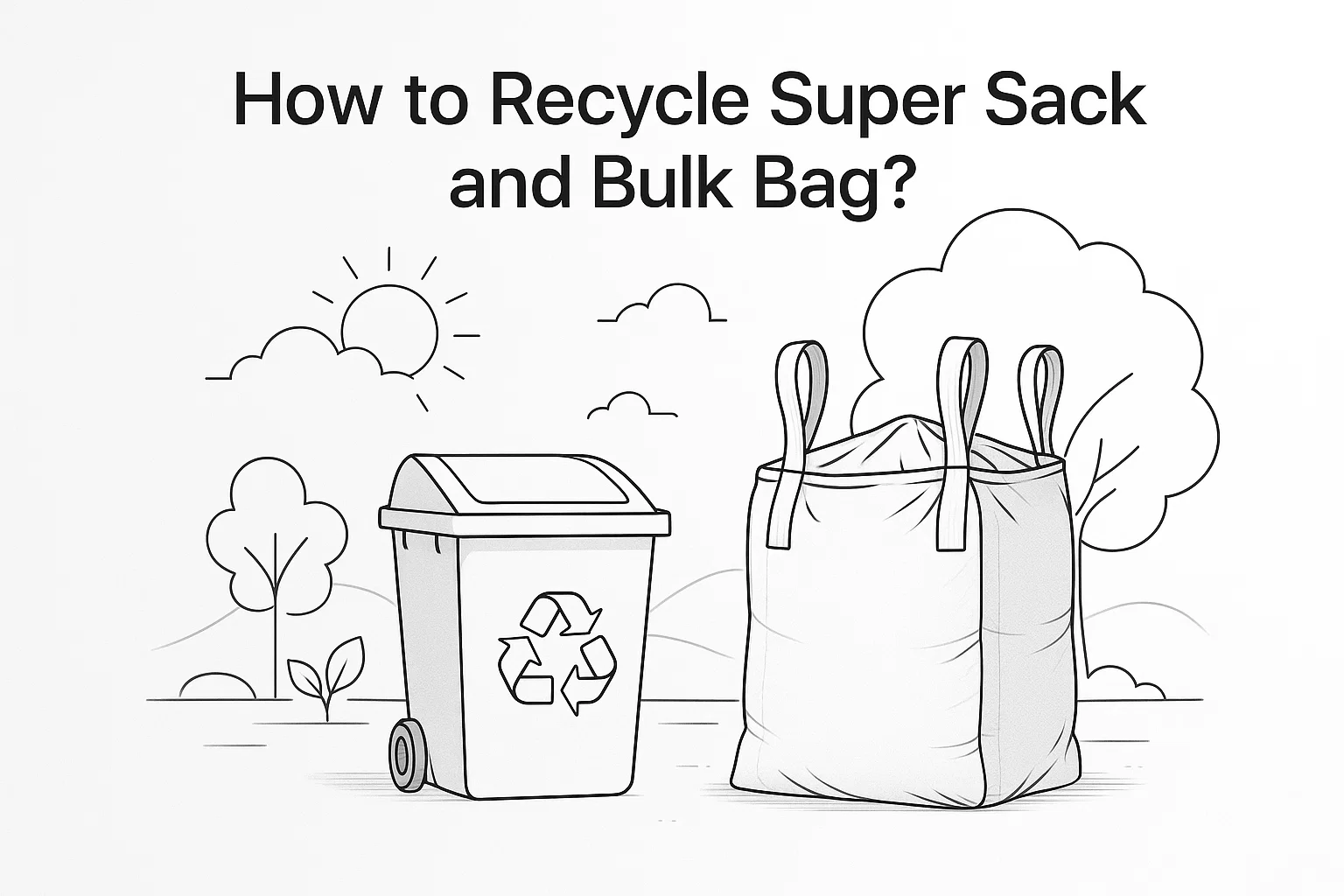Introduction: The Hidden Value in Woven Polypropylene
In the logistics and manufacturing sectors, Super Sacks—technically known as Flexible Intermediate Bulk Containers (FIBCs)—are the backbone of material transport. From agriculture to mining, these durable woven Polypropylene (PP) bags are indispensable. However, their durability creates a significant challenge at the end of their lifecycle.
For plant managers and recycling facility operators, Super Sack recycling represents a dual opportunity: eliminating a massive waste stream and generating high-value recycled resin.
~에 Energycle, we understand that processing FIBCs is not simple. The woven nature of the material requires specialized heavy-duty machinery capable of shredding, washing, and pelletizing without jamming or degradation. This guide explores the lifecycle of the Super Sack and how the right industrial equipment transforms this waste into a valuable commodity.
What Are Super Sacks? (And Why Are They Hard to Recycle?)
Super sacks are manufactured from woven strands of polypropylene (PP), a thermoplastic polymer known for its immense strength and resistance to chemicals. While these traits make them excellent for carrying thousands of pounds of product, they complicate the recycling process.
The Processing Challenge:
Unlike rigid plastics, woven PP fabric is tough and flexible. If processed with standard, general-purpose equipment, the long woven strands can wrap around shredder rotors, causing friction heat, downtime, and equipment damage.
To successfully scale Super Sack recycling, you cannot rely on generic machinery. You need a purpose-built system designed to handle high-tensile woven fabrics.
Reuse vs. Mechanical Recycling: Making the Right Choice
Before discussing mechanical processing, it is vital to segregate bags suitable for reuse from those destined for the recycling line.
1. The Path to Reuse (Reconditioning)
If a bag is structurally sound, reuse is the most sustainable option. This involves a rigorous inspection process:
- Safety Check: Examining the Safety Factor (SF) and Safe Working Load (SWL).
- Damage Control: Identifying holes, frayed edges, or UV degradation.
- 오염: Ensuring the bag did not previously hold hazardous chemicals.
2. The Path to Mechanical Recycling (Energycle’s Expertise)
When bags are damaged, soiled, or end-of-life, mechanical recycling is the solution. This is where the transition from “waste cost” to “revenue stream” occurs. The goal is to convert the dirty, woven fabric into clean, uniform PP pellets (granules) that can be reintroduced into the manufacturing economy.
The Industrial Super Sack Recycling Process
For a recycling plant manager, efficiency is the metric that matters. A profitable Super Sack recycling line involves four critical stages. Energycle’s equipment is engineered to optimize each step.
Stage 1: Heavy-Duty Shredding
The first step is size reduction. The bulk bags must be reduced to manageable flakes.
- The Problem: Woven tapes entangling the rotor.
- 해결책: High-torque, low-speed single-shaft shredders equipped with anti-winding rotors. This ensures the woven material is cut cleanly without jamming the machine, preparing it for the washing phase.
Stage 2: Intensive Washing and Separation
FIBCs often contain residual powders, chemicals, or organic matter.
- 마찰 세척: High-speed friction washers aggressively scrub the flakes to remove dirt and grime.
- 밀도 분리: Utilizing sink-float tanks, contaminants and non-PP materials are separated based on density.
- 결과: A pure stream of PP flakes ready for extrusion.
Stage 3: Drying and Feeding
Wet flakes lead to poor-quality pellets. Advanced centrifugal dryers and thermal drying systems reduce moisture content to below 3%.
- Compacting: Because woven plastic is light and fluffy (low bulk density), feeding it into an extruder is difficult. An integrated compactor/agglomerator densifies the material before it enters the screw, ensuring consistent throughput.
Stage 4: Compounding and Pelletizing
This is the final transformation. The clean, dry flakes are melted, filtered, and extruded.
- 여과법: Double-piston screen changers allow for continuous operation, filtering out any remaining microscopic impurities without stopping the machine.
- 펠릿화: The strand pelletizing system cuts the plastic into uniform granules.
Note: While Super Sacks are made of PP, similar advanced principles apply to other soft plastics. For facilities managing mixed flexible waste streams, discover our solutions for PE 필름 및 직물용 고급 플라스틱 재활용 장비.
일반적인 재활용 과제 극복
Investing in the wrong machinery often leads to three specific failures in FIBC recycling. Here is how Energycle technology addresses them:
- Material Wrapping:
- 도전: Woven strands wrap around shafts, burning out motors.
- Energycle Solution: Optimized rotor geometry specifically designed for woven textures prevents wrapping.
- High Contamination:
- 도전: Abrasive residues (like sand or mining minerals) wear down equipment.
- Energycle Solution: We utilize wear-resistant alloys (V4 stainless steel) and specialized filtration systems to handle dirty inputs and extend machine life.
- Inconsistent Pellet Quality:
- 도전: Recycled pellets contain air bubbles or unmelted particles.
- Energycle Solution: Our vacuum degassing zones and precision temperature controls ensure the final pellet is solid, uniform, and rivals virgin resin quality.
The ROI of In-House Recycling
Why should procurement specialists and plant managers consider investing in an Energycle line?
- Closed-Loop Economy: Manufacturers can recycle their own defects and waste back into their production line, reducing raw material purchase costs.
- Higher Resale Value: Selling scrap bales yields pennies on the dollar. Selling high-quality Reprocessed (Repro) Pellets commands a significantly higher market price.
- Sustainability Compliance: Meeting corporate ESG goals and reducing landfill fees.
Conclusion: Partner with the Experts
The journey from a dirty, discarded bulk bag to a pristine plastic pellet is complex, but with the right technology, it is highly profitable.
Super Sack recycling requires more than just a shredder; it requires an engineered solution. At Energycle, we provide the durability, precision, and support needed to turn your fiercest plastic waste challenges into your strongest assets.
Ready to upgrade your recycling capabilities?
지금 Energycle에 문의하세요 to discuss a custom solution for your facility.



